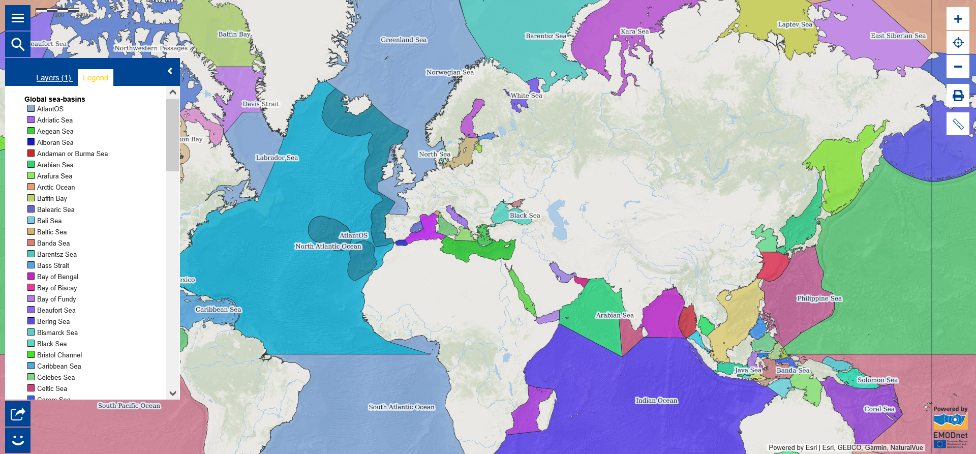
Have you played the new Atlas game on marine biodiversity? Now that your interest is sparked, we are diving deeper into marine biodiversity. Protecting marine biodiversity is high on the international agenda. There is great news from the European Union (EU) on this topic this week! The European Union ratified the Agreement on Marine Biological Diversity of Areas Beyond National Jurisdiction, also known as the High Seas Treaty. [1] The Agreement applies to marine biodiversity of “areas beyond national jurisdiction”, referring to the high seas and the international seabed area. Together, these areas amount to over two-thirds of the ocean and over 90 per cent of the habitat on Earth that is occupied by life! [2]
Ocean enthusiasts highly value marine biodiversity conservation for future generations, so that everyone has a chance to marvel at the secrets of the ocean! For many, the ocean is a place they connect with on a personal level, through sports, culture, heritage, literature and more. Others directly depend on the ocean for their sustenance. If you read last week’s Map of the Week, you may recall that the Blue Economy in the European Union employs nearly 5 million people.[3]
The ocean offers us multiple ecosystem services. It is home to a vast diversity of marine species, from microscopic species to the largest multi-ton species. It is an interwoven place, where many species migrate up and down the water column, across regions, and some migrate depending on their lifestage.[4] Humpback whales, for example, seasonally migrate from feeding grounds in polar regions in summer to mating grounds in the tropics in winter! [5] How do we protect the large and interconnected ocean, and the species it holds? National laws and international commitments are put in place so that we can sustainably use the ocean’ resources. But you may wonder… What when a humpback whale migrates through jurisdictions of multiple countries, or beyond any jurisdiction, and in regions where multiple sectors are active? Very good question!
Protecting humpback whales moving in areas beyond national jurisdiction is a responsibility we all share, as is the protection of marine biodiversity overall. Therefore, world leaders came together in 2023 at the Intergovernmental Conference on Marine Biodiversity of Areas Beyond National Jurisdiction to develop a framework to conserve and sustainably use Marine Biological Diversity of Areas Beyond National Jurisdictions: the BBNJ! The Treaty of the High Seas has the potential to mark a significant shift in ocean conservation efforts. Currently, only about 1% of the high seas is currently protected. Once ratified, the High Seas Treaty will change this, allowing the establishment of marine protected areas in these areas, contributing to the objective of protecting at least 30% of the planet by 2030. [1]
The BBNJ is about more than protecting our marine species and their environment. [6] It aims to ensure that everyone has access to the benefits of the ocean, knowledge and technology are shared, so that no-one is left behind, regardless of their world region or sector. [7] The agreement consists of four pillars [8]:
- Marine Genetic Resources, including the fair and equitable sharing of benefits;
- Measures such as area-based management tools, including marine protected areas;
- Environmental impact assessments;
- Capacity-building and the transfer of marine technology.
This international agreement is not yet in place. For that to happen, at least 60 countries need to sign and ratify the agreement. The EU’s ratification was joined by six of its Member States, including Cyprus, Finland, Hungary, Latvia, Portugal, and Slovenia. France and Spain had already ratified the Treaty in early 2025. With this collective ratification, the total number of parties to have ratified the agreement now stands at 29. The EU is now calling on all parties who have not yet ratified the agreement, to do so without delay, with the aim of reaching the 60 ratifications needed for its entry into force in time for the United Nations Ocean Conference taking place in Nice this June 2025. [1] Curious if your country has signed? Check out the High Seas Treaty Ratification Tracker.
Wish to learn more?
Explore the Map of the Week to learn more about the sea-basins of the world;
Find out what will happen during the United Nations Ocean Conference (UNOC 2025) that will take place on 9-13 June;
If you are in Nice during UNOC 2025, visit the Whale at the Palais des Expositions (Exhibition Hall) which is open to everyone with simple registration online or on site. Fifteen themed pavilions will be animated by a wide range of organisations, each dedicated to a major ocean challenge. Make sure you visit the European Digital Ocean Pavilion. The European Marine Observation and Data Network (EMODnet), which powers the European Atlas of the Seas, will be there and you’ll see a short video of the Atlas! Don’t miss the Beyond Borders pavilion and the EU4Ocean Coalition’s contributions there!
Not in Nice? Register online to access the European Digital Ocean Pavilion livestream!
Are you still wondering who the laureates of the #MakeEUBlue awards ceremony mentioned in last week’s Map of the Week are? Meet the winners!
The data in the map are provided by EMODnet.
[2] https://www.un.org/Depts/los/reference_files/BBNJ/bbnjagreementoverviewfactsheet.pdf
[3] https://op.europa.eu/webpub/mare/eu-blue-economy-report-2025/
[4] https://wiseoceans.com/massive-marine-migrations/
[5] https://wwhandbook.iwc.int/en/species/humpback-whale
[7] https://treaties.un.org/doc/Treaties/2023/06/20230620%2004-28%20PM/Ch_XXI_10.pdf
